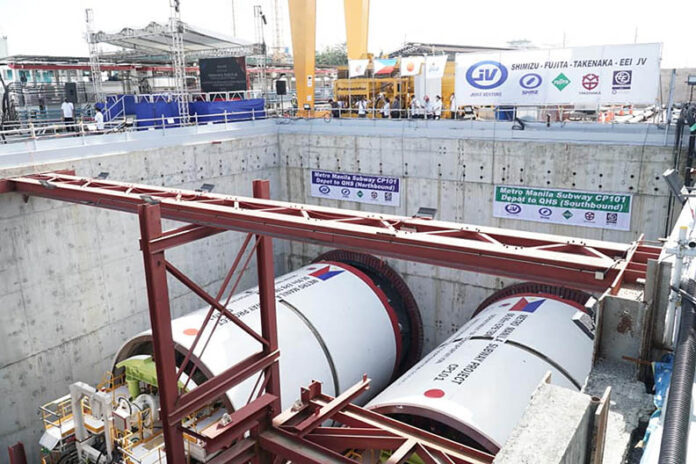
-
The first of six tunnel borers for the Metro Manila Subway Project was launched on January 9 by President Ferdinand Marcos Jr., assisted by Transportation Secretary Jaime Bautista
-
Marcos, in his keynote speech, says the MMSP construction is a “landmark event,” as the subway will be the first of its kind in the country
-
The launch of the boring machine signals the start of tunnelling work on MMSP’s Contract Package 101, with Bautista vowing the work will now go full speed
-
The MMSP will be 33kms long with 17 stations
The first of six tunnel boring machines (TBM) for the Metro Manila Subway Project (MMSP) was launched on January 9 in Valenzuela City, with President Ferdinand Marcos Jr. leading the event assisted by Transport Secretary Jaime Bautista.
With the launch of the boring machine, actual tunnelling work on the MMSP will begin for the 33-kilometer subway system.
Marcos, in his keynote speech, called the MMSP construction as a “landmark event,” as the project is the first of its kind in the country.
“This is a very apt beginning for a year with renewed vigor and commitment to our mission to improve the lives of Filipinos,” he said even as he thanked the Japanese government and the Japan International Cooperation Agency (JICA) for their support for the project and for the Philippines’ infrastructure program.
The MMSP has a more than P488 billion approved project cost with JICA.
“This tunnel boring machine highlights Japan’s expertise and technology and trailblazing contributions in the modern world and, thus, I am confident that they will help us shape our railway infrastructure and keep them at par with the highest international standards,” Marcos said.
Bautista, in his speech, stressed the value of interconnectivity of the country’s various transport infrastructure, saying he “discovered the urgent need of providing a railway system as one of the multimodal land-based transport options for arriving passengers” during his inspection at Ninoy Aquino International Airport Terminal 3 during the recent holiday rush.
The transport chief said “today’s start of tunneling work signifies the point of no return. We are going full speed ahead to complete the country’s first subway.”
The MMSP’s Contract Package 101 (CP101) is part of the seven civil work contracts for the project. It will involve construction of three underground stations in Quezon City and an additional semi-underground station in the northern-most part of the Valenzuela City depot.
Six units of TBMs will be used to complete the drilling of the tunnels and for the top-down excavation for the construction of the stations of CP101.
Around 1.2 million cubic meters of soil using cut-cover and the TBMs are to be excavated for the partial operability section of the project, or an area equivalent to 500 Olympic-size swimming pools.
For the tunnels alone, around 711,000 cubic meters of soil or the equivalent of 285 Olympic-size swimming pools will be excavated.
The entire alignment will have a total excavated earth of about 7,419,940 cubic meters, equivalent to 2,500 Olympic-size swimming pools.
Billed as the country’s “crown jewel” of mass transit system, the Metro Manila Subway will cut across eight cities that will stretch from Valenzuela City to FTI-Bicutan in Parañaque City with a spur line to NAIA Terminal 3 in Pasay City.
With 17 stations, the country’s first underground railway system aims to cut travel time between Quezon City and NAIA in Pasay City from the present one hour and 10 minutes to just 35 minutes.
Once operational, the railway system will carry as many as 370,000 passengers daily.
RELATED READ: Metro Manila subway breaks ground




